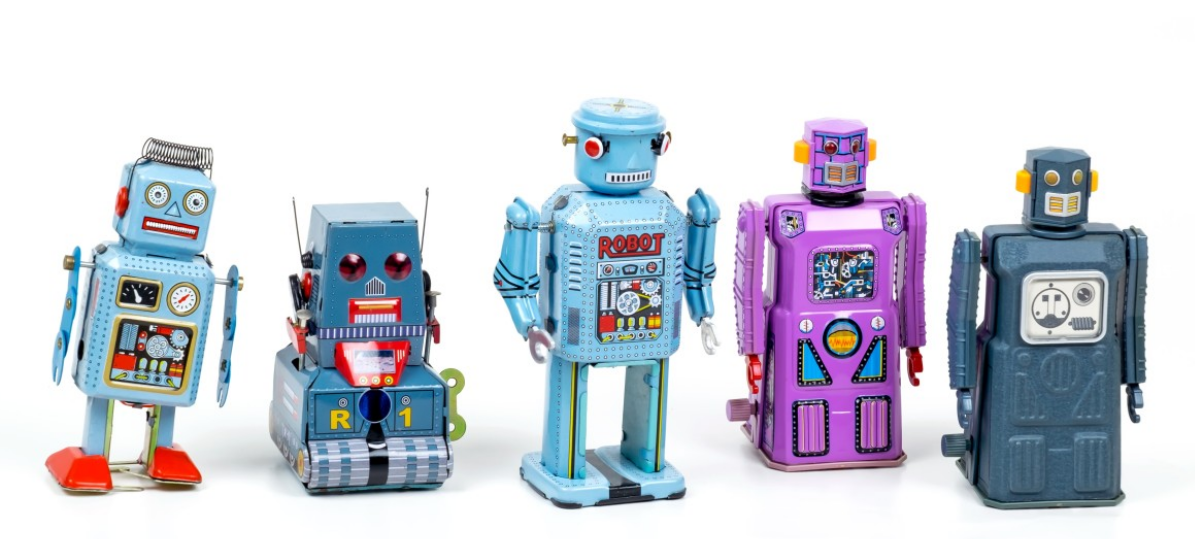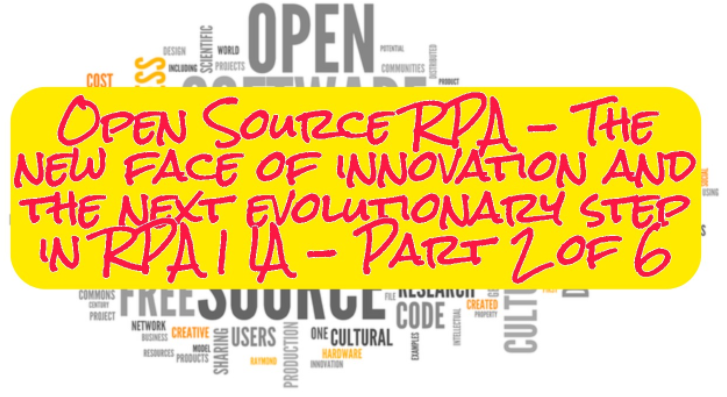An experts guide to the A-Z of all things Robotic Process Automation, Data Analytics, Intelligent Automation and Digital Transformation – the letter T
Welcome to the TWENTIETH part of a 26 part series detailing the A-Z of all things Robotic Process Automation (RPA), Data Analytics (DA), Intelligent Automation (IA) and Digital Transformation (DT). This article highlights all things relating to intelligent automation and digital transformation beginning with the letter ‘T’.
Toolkit: Many organisations have failed at digital transformation. They purchased one digital tool (e.g. RPA) and then tried to solve all their business challenges using it. If an organisation expects to transform their business operations using one tool, such as robotic process automation (RPA), then this is simply not possible. This is the human equivalent of using a screw driver to fix a window, bake a cake and grow a carrot. This does not work in real life.

Just as Rory McIlroy cannot win at Augusta with one golf club, a digital transformation program requires a digital toolkit to automate the ‘clickety-click’ (i.e. mundane, routine, repetitive) and the ‘thinkety-think’ (i.e. cognitive, emotional, creative). A digital toolkit can include RPA, Artificial Intelligence, Machine Learning, Chatbots, Python, Digital Forms, VBA, C#, OCR, BPM tools and lots more besides.
“There is a huge amount of choice in the automation market of tools that cover different areas across the automation journey. Many of the main vendors are adding tools and functionality to add value and differentiate their offerings. Identifying what you need and then making them work at scale, requires an understanding of your organisation and the application of experienced capability.
The best toolkit will still fail without the right people and team to apply them. The most successful projects I’ve seen or worked on, have clear objectives, establish an experienced core team, then make a collective and strategic selection of tools.”
Mark Barrett , Automation Director and Business Owner
- 40 essential criteria to select an intelligent automation platform
- Proof of Concept or Proof of Value – who cares just get going!
Tasks and Processes: A lot of companies struggle with achieving the ‘promised’ benefits or value from process automation. This can have many causes. One of them is that organisations get stuck automating individual tasks, versus actually looking at end to end processes. While this may be perfectly fine at the very early stages, say a proof of concept, organisations quickly realise that humans perform work as a series of tasks/activities and not just individual tasks. That series of activities or tasks are called business processes. Processes exist to achieve particular results or outcomes that are valued by internal and external customers. And, it is those business processes that organisations need to automate. That is where the value is for an organisation!
In order to “see” processes, an organisation needs to adopt a ‘process view of work‘. This helps organisations understand what a process is and does. It is important to understand that processes are hierarchically organised and decomposable into multiple levels of granularity. From an RPA perspective, when talking about process automation, it is level 3 or 4 you need to look at.
Process Frameworks are a good reference to obtain a better understanding of the work that is performed in an organisation (e.g. APQC’s process framework provides excellent insight into the work being performed with an organisation). And, if an organisation has a Process Excellence team, then it can help drive process automation starting from a level 3. It can help document processes and kick-start an automation life cycle.
Martin Jahn, Customer Success Director
Teamwork: Whilst we love to hear stories of hero leaders changing the world, (Bill Gates, Steve Jobs, Michael Dell, etc.) each had a team behind them. Teamwork wins every time. Digital transformation requires the business, technology and digital teams to work together. Everyone must understand and align to the business strategy. Then team goals and KPIs should be set to ensure everyone pulls in the same direction.
If everyone feels accountable for delivering change, they are more likely to drive forwards together. Making digital transformation efforts one teams responsibility, only (e.g. IT) dooms such programs to failure, as the rest of the organisation feels no sense of responsibility or accountability for the program.

Try it: Technology is relatively cheap and highly accessible, particularly cloud based tooling which can be rented, experimented with and discarded quickly. Firms no longer have to wait weeks or months buying equipment and expensive software to build a website or chatbot. This can be done with a credit card and a lot of enthusiasm over a couple of days. There are no barriers to tech, so jump in and try it. But do remember:
- Organisations need to have a business strategy (i.e. a game plan of where they want to play and earn a return) AND align their automation or digital strategy to their business strategy. Not the other way around.
- Before buying any automation, analytics or digital tooling make sure there is a ‘business plan first approach and then, a tooling and automation strategy second’.
Third Party. When it comes to digital transformation, organisations often find that they do not possess the necessary skills or knowledge needed to digitally transform an organisation. As such, they need to look to third party vendors or system integrators (SIs) for support. It is important that organisations seek professional help. But they must choose their partner carefully. Organisations should look to see if the third party has a track record of successful intelligent automation and digital transformation in their sector.
Take time to check references and make sure they are a cultural fit with your organisation. Invite the third party into your organisation and treat them as you would an extension of the business team. Don’t hide things from them and wonder why they are not aligned to your program. Look for a long term relationship, but insist the knowledge is codified and transferred to the organisation, so that it can build its own people and capabilities. This will help deliver an affordable program, ensure new innovative ideas are brought into the company and keep the partner hungry and fighting for new business.
Technology: Technology is reinventing the world. Never before have firms had such an opportune time or need to transform. Covid, massive cloud computing power; freely available data sets; low-code/no-code platforms; self directed and self motivated digital natives entering the workforce; and a well stocked supplier market are all available to manage and accelerate firms digital capabilities.
Technology driven change has never been faster, nor will it ever be slower. Never before has an organisation’s ability to exploit digital and automate technologies for better business outcomes been such a key determinant of their immediate and likely future success. Programmers, digital analysts and data scientists now control the world. As such, the survival of the digitally fittest is the modern day equivalent of digital Darwinism. Organisations that invest in technology will win. Those that don’t will fail.
Technology Is Reinventing Humanity | Jordan Nguyen | TEDxSydney (YouTube)
Testing: Before organisation put code live they need to test, test and then test again. A hidden side effect of an automation program, or indeed any software development program, is the cost of bot maintenance. In the rush to be seen as Agile, and delivering ‘waves of value’, developers are often tempted to rush out code that does not work.
By completing testing as the code is developed (unit testing), as code blocks are joined together (integration testing), or as part of your ‘paired code’ cycle then organisations have more chance of the code working as it enters a hyper care period (live test). Support costs can quickly mount up, and user confidence rapidly decrease, if bot code executes poorly in a live environment. User experience (UX) is key as happy bot users usually want more bots. Unhappy bot users usually want less bots.
Niladri Panigrahi, Head of RPA and Digital Transformation
Talent: Organisations often forget that it is people, not technology, that transform organisations. If businesses invested as much time and energy in their people as they did their technology, they might just become brilliant organisations.
“The focus of most organisations tends to lean more toward technology, what it can do for them, how amazing it is, how much money/time etc they can save. What is often an afterthought is the talent which is crucial to help them deliver these technology programmes. Getting your talent right is just as important as selecting the right technology solution. If you get both right your transformation dreams can be realised much sooner!”
Harrison Goode, AI and RPA recruitment specialist
This article highlighted some things relating to intelligent automation and digital transformation beginning with the letter “T”. There are many ‘T’s’ organisations need to consider but what ‘T’ do you think is the most important?
#intelligentautomation #bots #rpaworks #digitaltransformation#roboticprocessautomation #rpa #cognitiveautomation #digitaldisruption#digitalworkforce #processautomation #digitalfuture #digitalstrategy
Other articles: If you like this article then you may find these articles of use also.
- How to build a business case for Intelligent Automation and Robotic Process Automation
- 30 ways to build a pipeline of processes suitable for Robotic Process Automation (RPA) and Intelligent Automation (IA)
- The biggest lie told to RPA customers – 50 robots equals success
- 40 essential selection criteria to choose an RPA platform
If this could benefit someone else tag them and share this.
Free to reuse: We are a community of RPA, digital analytics, digital transformation and Intelligent Automation experts with years of real world experience. We have stories to tell and the scars to show for it. We share our collective wisdom for free to simply provide as much value as we can to you. Therefore, if you want to post this article on your LinkedIn page then please feel free to do so. The more information we share within the RPA community the more likely businesses are to succeed with this excellent technology.
Further Help: If I can help you in any way please do reach out.
Note: The views expressed above are our views and not those of my employer or the employers of the contributing experts.










Leave a Reply